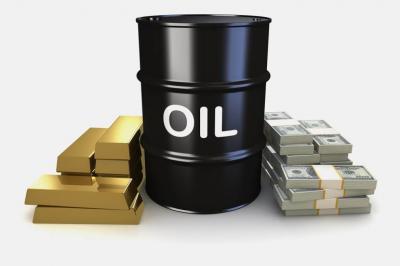Oil prices fell today, Thursday, as the U.S. dollar strengthened after the Federal Reserve signaled it may raise interest rates faster than expected. However, losses were limited due to a significant decline in U.S. crude oil inventories. Brent crude futures dropped nearly two dollars, or about 3%, to $72.10 per barrel during trading, after reaching its highest levels since April 2019 in the previous session. U.S. crude futures decreased by about two dollars or 2.76% to $70.16 per barrel after hitting their highest levels since October 2018 the prior day.
Edward Moya, senior market analyst at OANDA, stated, "Energy markets have become heavily focused on a strong summer travel season and nuclear deal talks with Iran, to the extent that they were shocked by the Federal Reserve’s surprise pivot towards tighter monetary policy." The U.S. dollar marked its strongest daily gain in 15 months after the Federal Reserve hinted at possibly raising interest rates at a faster pace than initially anticipated. A rising U.S. dollar increases the cost of dollar-denominated oil for holders of other currencies, which could pressure demand.
However, oil price losses were limited as data from the U.S. Energy Information Administration showed that crude oil inventories in the world's largest consumer fell sharply last week, with refineries ramping up operations to their highest levels since January 2020, indicating continued improvement in demand. Prices were also supported by a 4.4% increase in crude consumption by refineries in China, the world's second-largest oil consumer, in May compared to the same month a year earlier, reaching a record high.
Despite this, the oil market continues to show signs of strength as the pandemic recedes. A U.S. government report indicated that domestic crude inventories declined last week along with increased mobility. Meanwhile, Saudi Energy Minister Prince Abdulaziz bin Salman noted at a conference that the cautious approach taken by OPEC+ to revive supplies is paying off, emphasizing that he "remains committed to this position."
Oil prices have risen this year, with West Texas Intermediate crude reaching its highest level since 2018 earlier this week as the rollout of Covid-19 vaccines paves the way for the lifting of restrictions imposed to contain the pandemic. Even with recovering consumption and inventory draws, the Organization of the Petroleum Exporting Countries (OPEC) and its allies have only returned a small portion of the supplies withdrawn from the market last year to rescue prices. The alliance is set to meet on July 1 to strategize.
Sofro Sarkar, an energy analyst at DBS Bank, remarked, "We initially believed oil would reach $70 a barrel, but it now seems that $80 per barrel in the third quarter is possible," indicating strong demand as economies open up. He added, "The Federal Reserve's move is likely to affect other commodities more than oil," according to Bloomberg.
There were also bullish signals from leading economies in Asia. In India, which has suffered from a brutal wave of Covid-19 infections, road fuel sales rebounded during the first half of June. Meanwhile, fuel prices in China, which has largely contained the outbreak, reached a record high last month. In the U.S., domestic crude inventories fell for the fourth week in a row, with states including California easing restrictions and COVID-19 cases declining. In the largest supply hub in Cushing, Oklahoma, inventories dropped to their lowest levels since March 2020.
Citigroup Inc stated in a note that the outlook "remains constructive in the coming months, as pent-up demand is likely to drive global oil consumption to new record levels this summer," and that Brent prices could rise above $80.




